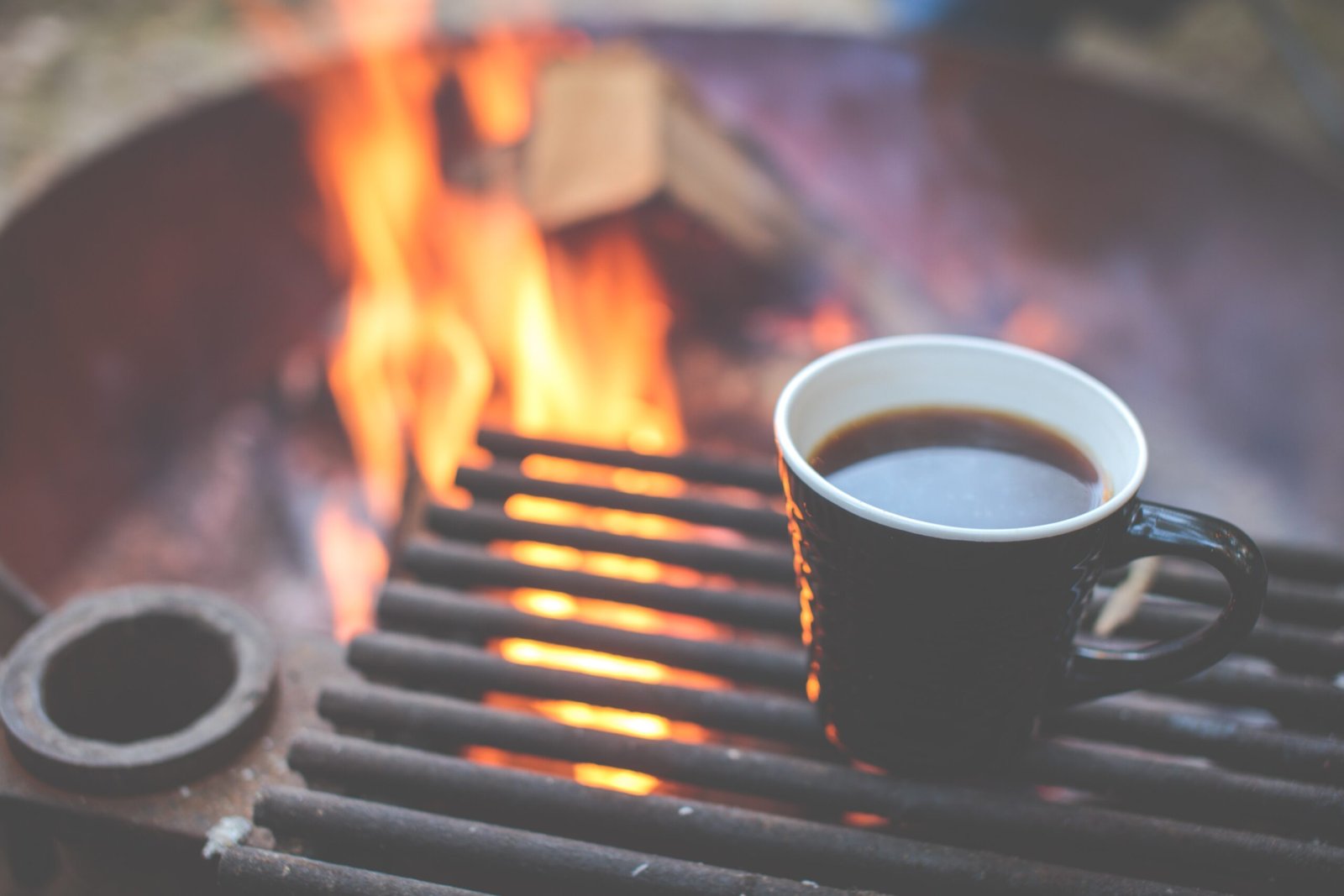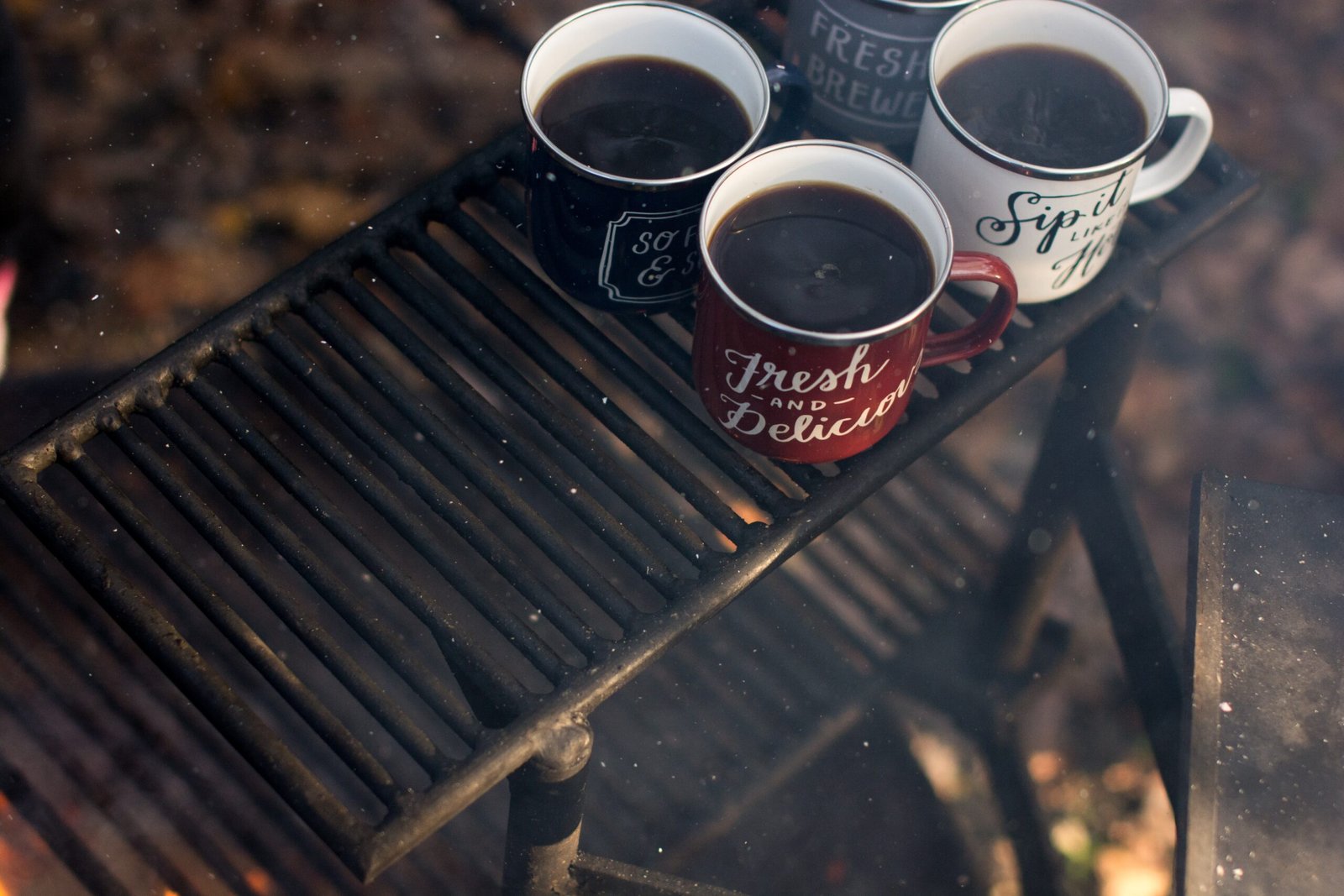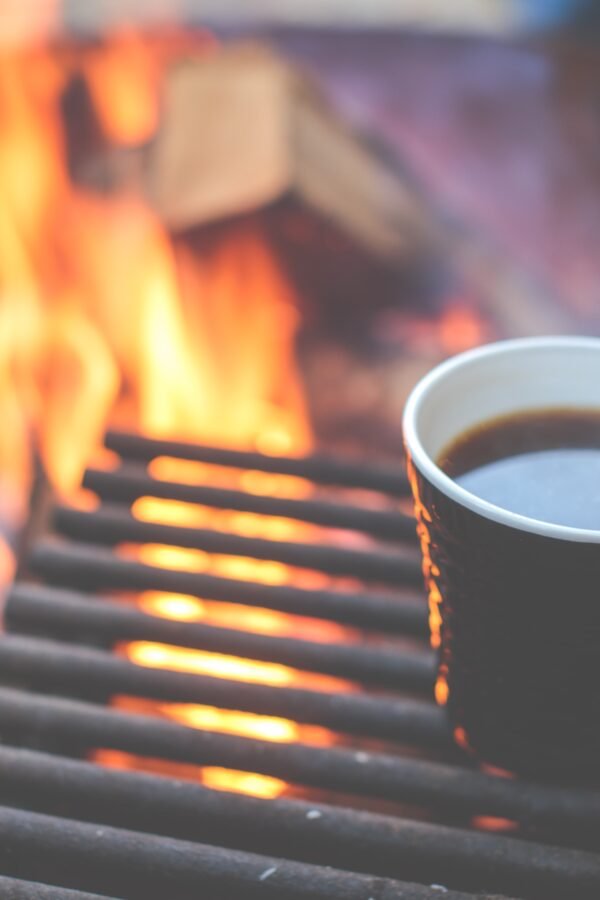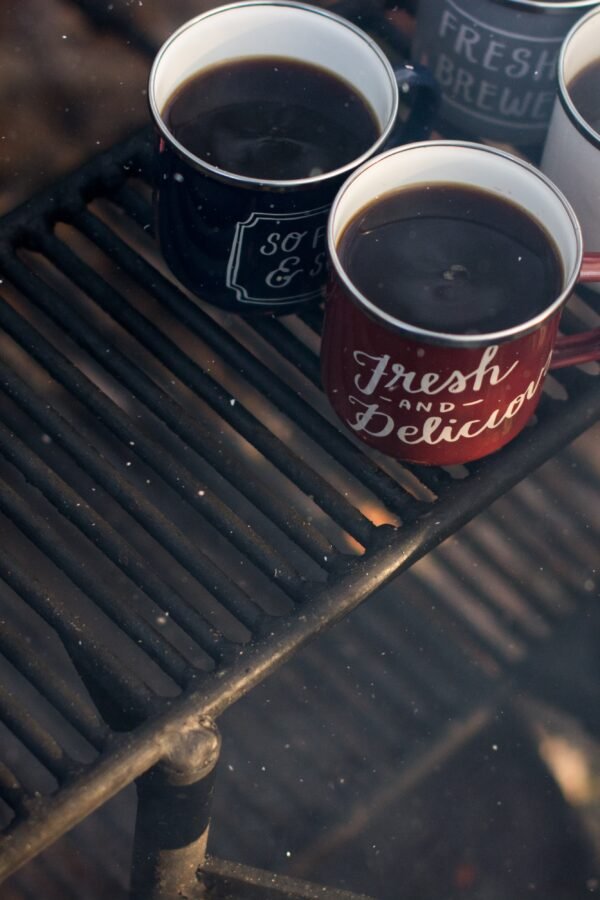Imagine you’re out in the wilderness, surrounded by towering trees and a gentle breeze. The crackling fire warms your campsite, while the smell of freshly grilled food fills the air. You’ve been enjoying the great outdoors all day, but now it’s time to tackle a less glamorous task – washing the dishes. Don’t worry, we’ve got you covered! In this article, we’ll share some handy tips and tricks on how to wash dishes while camping, so you can keep your campsite clean and enjoy every moment of your outdoor adventure. So grab a sponge and let’s get started!
Setting up your camping kitchen
Setting up a camping kitchen is an essential part of any outdoor adventure. Whether you’re planning a weekend camping trip or a month-long excursion, having a well-organized and efficient kitchen area can make all the difference. In this article, we will guide you through the process of setting up your camping kitchen, from choosing the right equipment to organizing and maintaining a wash station. So grab your spatula and let’s get started!
Choosing the right camping kitchen
When it comes to choosing the right camping kitchen, there are a few factors to consider. First and foremost, you’ll want to think about the size and weight of the equipment. If you’re backpacking, lightweight and compact options are a must. However, if you’re car camping, you have more flexibility in choosing larger and more feature-packed options.
A camping kitchen typically consists of a stove, cookware, utensils, and storage containers. It’s important to invest in high-quality equipment that is durable and suited for outdoor use. Look for stoves that are easy to set up and fuel-efficient, as well as cookware that is lightweight and non-stick for easy cleaning.

Organizing your camping kitchen
Once you’ve chosen your camping kitchen equipment, the next step is to organize your kitchen area. This will help you maximize space and efficiency, making cooking and cleaning a breeze. One tip is to use plastic bins or crates to store and organize your kitchen supplies. Separate items into different bins, such as one for cookware, one for utensils, and one for cleaning supplies.
Additionally, consider investing in a hanging pantry organizer or a collapsible shelving unit to create extra storage space. This will help you keep your cooking area tidy and prevent items from getting misplaced or damaged.
Setting up a wash station
A wash station is essential for keeping your camping kitchen clean and hygienic. It’s important to set up a designated area where you can wash your dishes and utensils, as well as your hands. To create a wash station, you’ll need a few key items:
- Biodegradable soap: Choose a biodegradable soap that is safe to use in natural water sources. This will help protect the environment while still allowing you to clean your dishes effectively.
- Scrub brush or sponge: A scrub brush or sponge is necessary for removing stubborn food particles and grease from your dishes.
- Dishcloth or towel: Use a dishcloth or towel specifically designated for drying your dishes.
- Pot scraper or spatula: A pot scraper or spatula comes in handy for scraping off any stubborn food residue from your cookware.
- Drying rack or dish drainer: A drying rack or dish drainer will allow your dishes to air dry and keep them organized while you’re camping.
By setting up a wash station with these essential items, you can ensure that your dishes and utensils stay clean and ready for your next meal.

Collecting and storing water
One of the most important aspects of dishwashing while camping is having access to clean water. Here are some tips for finding, collecting, and conserving water in the great outdoors.
Finding clean water sources
Before setting up your camping kitchen, it’s crucial to locate a reliable source of clean water. Look for designated water sources in your camping area, such as rivers, lakes, or established water stations. It’s important to verify if the water is safe for consumption by checking with park officials or using water purification methods.
Using water containers
Carrying water containers is essential for collecting and storing water while camping. Opt for lightweight and durable containers that are easy to transport. Collapsible water containers are a convenient choice as they can be folded up when not in use. Remember to clean and sanitize your water containers regularly to prevent any contamination.
Conserving water
Conserving water is vital when camping, as it helps minimize your impact on the environment and ensures you have enough water for essential tasks like cooking and cleaning. Some tips for conserving water include:
- Turn off the tap when not in use.
- Use a basin or bucket to catch and reuse water when rinsing dishes.
- Use biodegradable soap to wash dishes, as it requires less water to rinse off.
- Limit the amount of water used for each dishwashing session.
By being mindful of your water usage and implementing conservation techniques, you can ensure that you have enough water for your camping adventure while minimizing your environmental footprint.
Gathering necessary supplies
To effectively wash dishes while camping, it’s important to gather the necessary supplies. Having the right tools on hand will make the dishwashing process easier and more efficient. Here are some essential supplies you’ll need:
- Biodegradable soap: Choosing a biodegradable soap is not only better for the environment but also ensures that your dishes are clean and safe to use.
- Scrub brush or sponge: A suitable scrub brush or sponge will help remove food particles and grease from your dishes.
- Dishcloth or towel: Use a dedicated dishcloth or towel for drying your dishes.
- Pot scraper or spatula: A pot scraper or spatula can be used to scrape off any stubborn food residue from your cookware.
- Drying rack or dish drainer: A drying rack or dish drainer will allow your dishes to air dry while keeping them organized.
By gathering these supplies before you start washing dishes, you’ll have everything you need to make the process smooth and efficient.
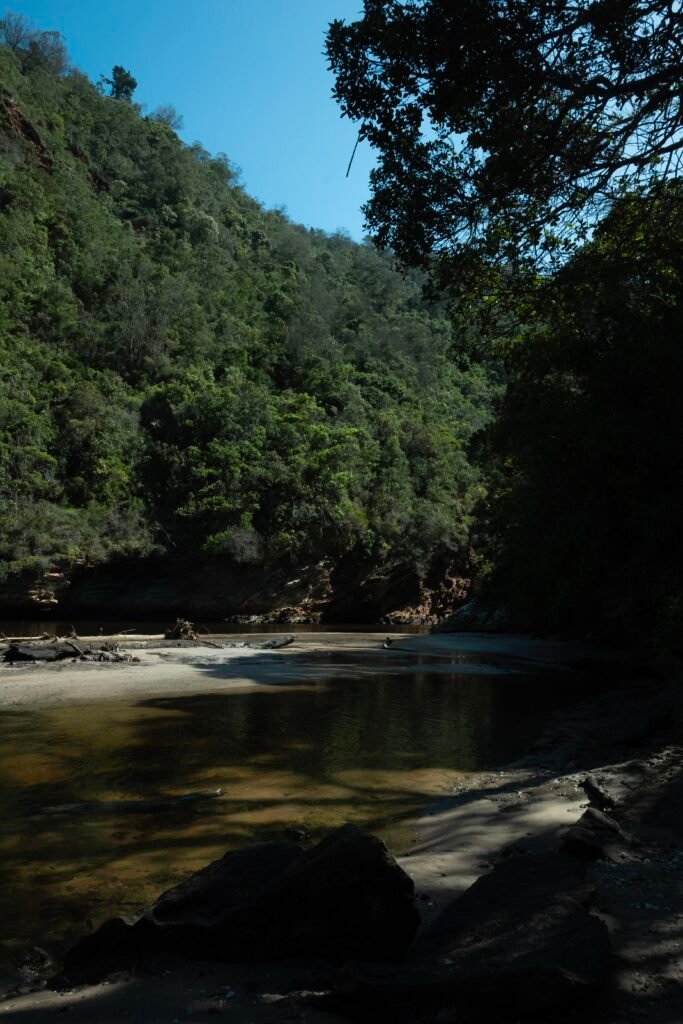
Pre-cleaning and scraping dishes
Before washing your dishes, it’s essential to pre-clean and scrape off any excess food. This will help prevent clogging your wash station and make the washing process easier.
Removing excess food
Start by using paper towels or napkins to wipe off any excess food from your dishes. This step is crucial for minimizing the amount of food waste that goes down the drain and helps prevent clogs.
Using a pot scraper or spatula
For dishes with dried or stubborn food residue, a pot scraper or spatula can come in handy. Gently scrape off any remnants of food before washing to make the dishwashing process more efficient.
Taking the time to pre-clean and scrape your dishes will save you time and effort when it comes to washing them.
Washing dishes with minimal water
When camping, water conservation is key. Washing dishes with minimal water can help you make the most of the water you have available. Here are a few techniques to help you achieve this:
Heat water on a stove or fire
Before you start washing dishes, heat a pot of water on your camping stove or fire. This hot water will help remove grease and food residue more effectively, reducing the amount of water needed for rinsing.
Using a basin or bucket
Fill a basin or bucket with warm soapy water. Use this water to wash your dishes, starting with the least soiled items first. By using a basin or bucket, you can minimize water usage since the same water can be reused for multiple dishes.
Creating a washing station
To create a washing station, set up two bins or basins – one filled with warm soapy water and the other with clean water for rinsing. Wash your dishes in the soapy water, ensuring that you scrub each item thoroughly. Then rinse the dishes in the clean water to remove any soap residue.
Cleaning dishes in a stream or lake
If you’re camping near a stream or lake with clean water, you can wash your dishes directly in the water. Use biodegradable soap sparingly and make sure to keep the soapy water away from natural water sources.
By implementing these techniques, you can wash your dishes efficiently while minimizing water usage.
Techniques for washing dishes
Now that you’ve set up your washing station and gathered the necessary supplies, let’s dive into some techniques for washing dishes while camping.
Pre-soaking dishes
If you have dishes with stubborn food residue, pre-soaking them can make the washing process easier. Fill a basin or bucket with warm soapy water and let the dishes soak for a few minutes. This will help loosen any stuck-on food, making it easier to scrub the dishes clean.
Hand washing dishes
To hand wash your dishes, start by scrubbing each item thoroughly with a scrub brush or sponge. Pay attention to any difficult spots or greasy areas. Rinse the dishes in clean water to remove any soap residue, ensuring that they are thoroughly clean before drying.
Using a 3-basin dishwashing method
Another technique for washing dishes while camping is the 3-basin dishwashing method. Set up three bins or basins – one with warm soapy water for washing, one with clean water for rinsing, and one with a sanitizing solution. Wash your dishes in the soapy water, rinse them in the clean water, and then immerse them briefly in the sanitizing solution to kill any remaining germs.
By utilizing these techniques, you can ensure that your dishes are clean and sanitary, even in the great outdoors.
Drying and storing dishes
After washing your dishes, it’s important to dry them thoroughly before storage. Here are a few methods for drying and storing your dishes while camping.
Air-drying dishes
The simplest and most environmentally friendly way to dry your dishes is by allowing them to air dry. Place them on a clean, dry surface or use a drying rack or dish drainer. Make sure there is enough airflow around the dishes to facilitate the drying process.
Using a dishcloth or towel
If you prefer to towel dry your dishes, use a dishcloth or towel specifically designated for this task. Dry each item thoroughly, paying special attention to any crevices or hard-to-reach areas. Ensure that the cloth or towel is clean and dry before use to prevent any cross-contamination.
Storing dishes safely
Once your dishes are dry, it’s important to store them safely to prevent any damage or contamination. Use plastic bins or containers with secure lids to protect your dishes from dirt and insects. Place the bins or containers in a designated area, away from potential hazards such as open flames or sharp objects.
By properly drying and storing your dishes, you can ensure that they remain clean and ready for your next camping adventure.
Proper disposal of wastewater
Properly disposing of wastewater is essential for maintaining a clean and eco-friendly campsite. Here are some tips for disposing of your dishwashing wastewater responsibly.
Straining food particles
Before disposing of your dishwashing wastewater, strain it through a mesh strainer or colander to remove any food particles. This will help prevent clogs in your drain or contamination of natural water sources.
Digging a sump hole
If you’re camping in a remote area without access to plumbing, consider digging a sump hole for your wastewater. Dig a hole at least 6 to 8 inches deep and pour your wastewater into the hole. Cover the hole with dirt to prevent any odors or animals from being attracted to the area.
Evaporating or dispersing water
In some camping areas, it may be permissible to disperse or evaporate your dishwashing wastewater. Check with park officials or local regulations to determine if this is allowed. If permitted, scatter the wastewater over a wide area, away from your campsite and any water sources, and allow it to evaporate.
By following these disposal methods, you can minimize your impact on the environment and leave your campsite clean and pristine for future campers.
Keeping your campsite clean
In addition to washing dishes, it’s important to keep your entire campsite clean. Here are a few tips for maintaining a clean and tidy camp kitchen:
Wiping down surfaces
Regularly wipe down surfaces, including tabletops, cooking surfaces, and utensils, to prevent the buildup of dirt and debris. Use biodegradable cleaning wipes or a solution of water and vinegar for an environmentally friendly cleaning option.
Regularly emptying trash
Avoid attracting animals to your campsite by regularly emptying your trash. Use a designated trash bag or container with a secure lid and dispose of the trash in designated bins or facilities as instructed by park officials.
Utilizing bear-safe food storage
If you’re camping in bear country, it’s crucial to practice bear-safe food storage. Invest in bear canisters or bear bags to store your food and scented items securely. Hang the bags or place the canisters away from your sleeping area to prevent any unwanted encounters with wildlife.
By keeping your campsite clean and practicing proper food storage, you can ensure a safe and enjoyable camping experience for both you and the animals that call the wilderness home.
Tips for efficient dishwashing
To make your dishwashing experience while camping as efficient as possible, here are a few additional tips:
Clean as you go
To reduce the amount of time spent on dishwashing, clean as you go. Wash items immediately after use to prevent any food residue from drying and becoming more challenging to clean later.
Assigning dishwashing duties
Camping is often a group activity, so consider assigning rotating dishwashing duties among your camping companions. This will not only share the workload but also ensure that everyone contributes to keeping the camping kitchen clean and organized.
Using disposable plates and utensils sparingly
While disposable plates and utensils may seem like an easy option, try to use them sparingly. Opt for reusable alternatives whenever possible to reduce waste and protect the environment.
By implementing these dishwashing tips, you can optimize your time and effort spent on cleaning while making the most out of your camping experience.
In conclusion, setting up your camping kitchen and washing dishes while camping doesn’t have to be a daunting task. With the right equipment, proper organization, and efficient techniques, you can maintain a clean and functional camp kitchen. Remember to choose the right camping kitchen equipment, set up a wash station, and gather the necessary supplies. Learn how to collect and store water, wash dishes with minimal water, and dispose of wastewater responsibly. Keep your campsite clean, dry and store your dishes properly, and follow efficient dishwashing tips. By following these guidelines, you’ll be well-prepared to enjoy delicious meals and create lasting memories on your camping adventures. Happy camping!


